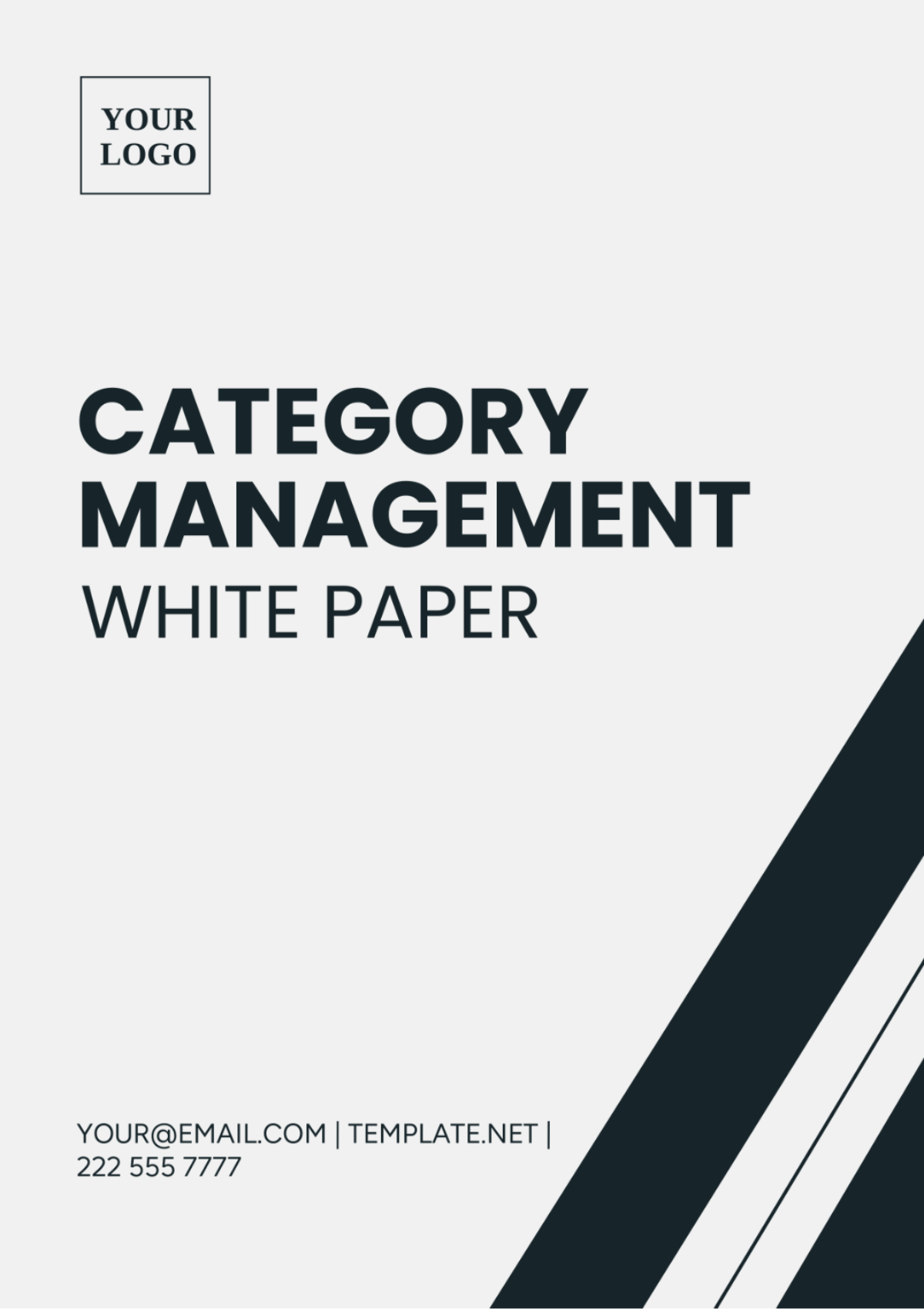Category Management White Paper
I. Executive Summary
This white paper provides a strategic overview and detailed insight into category management within [Industry or Sector]. The document outlines foundational strategies, implementation processes, and the expected outcomes for effective category management at [Your Company Name]. It is intended for internal stakeholders and strategic partners who are involved in shaping the procurement and organization of categories.
II. Introduction
The concept of category management has become a critical aspect of modern strategic sourcing and procurement. It focuses on grouping products or services into categories that are managed as strategic business units. This paper discusses how [Your Company Name] can optimize its strategies to manage categories efficiently and effectively.
III. Analysis of Current Category Management Practices
Existing practices in category management within our organization are assessed to highlight strengths and identify areas for improvement. Key dimensions include:
Organizational alignment: When assessing category management, we prioritize organizational alignment to ensure strategies align with broader goals, focusing on effective communication and collaboration across departments.
Supplier relations: Supplier relations are crucial in category management. Review key supplier relationships, focusing on communication, collaboration, and value-added partnerships. Evaluate supplier performance metrics to nurture beneficial partnerships effectively.
Cost management: Cost management is essential. Analyze cost structures across categories to optimize expenses. Implement strategies like bulk purchasing, negotiations, and efficiency improvements for better cost control.
Risk mitigation: Risk mitigation is fundamental. Identify and assess risks like supply chain disruptions, quality issues, and regulatory compliance. Review and improve risk management strategies for operational resilience.
IV. Strategic Development for Category Management
This section details the strategic framework created to improve category management at [Your Company Name]. The strategy comprises:
Market Analysis: Conduct comprehensive reviews and forecasts to inform category strategies, ensuring alignment with market trends and demands.
Performance Metrics: Define clear performance indicators to measure and track category success, facilitating ongoing evaluation and improvement.
Stakeholder Engagement: Engage all relevant stakeholders, including internal teams and external partners, to align goals, and expectations, and foster collaboration.
Supplier Partnership: Cultivate strong relationships with key suppliers to enhance value delivery, promote innovation, and ensure mutual success in category management endeavors.
V. Implementation Plan
An actionable plan to deploy the strategies discussed. The implementation plan will cover:
Phase | Objective | Deadline |
|---|
Preparation and Alignment | Ensure all teams understand and align with the new category management strategies. | [Date] |
Execution | Start the rollout of category management practices across the organization. | [Date] |
Review and Optimization | Regularly assess the outcomes and optimize the processes where necessary. | [Date] |
VI. Expected Outcomes and Impact
Anticipated outcomes from implementing the new category management framework are discussed here, including projected impacts on efficiency, cost savings, and supplier performance. This section provides a clear picture of the benefits and improvements expected from the proposed strategies.
VII. Conclusion
This white paper presents a structured approach to revitalizing category management at [Your Company Name]. It seeks to enhance understanding regarding the strategic significance of category management and offers guidelines for successful implementation, along with expected outcomes. The conclusion summarizes key points and emphasizes the importance of adopting the outlined strategies.
VIII. Appendices
Additional information such as detailed data analysis, case studies, and reference materials supporting the positions and strategies presented in the white paper are included here. These appendices provide supplementary insights and evidence to reinforce the effectiveness and feasibility of the proposed category management framework.
White Paper Templates @ Template.net






























